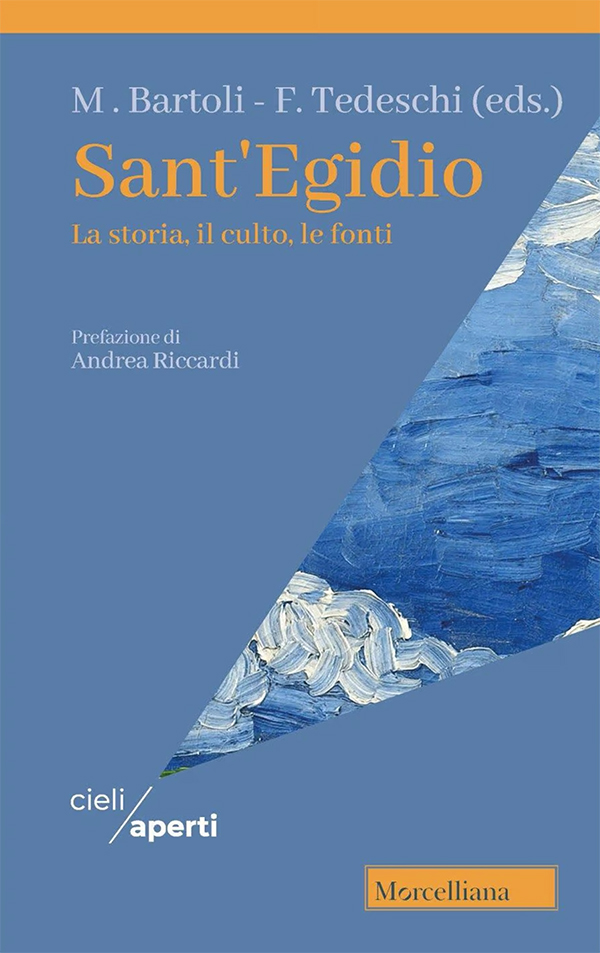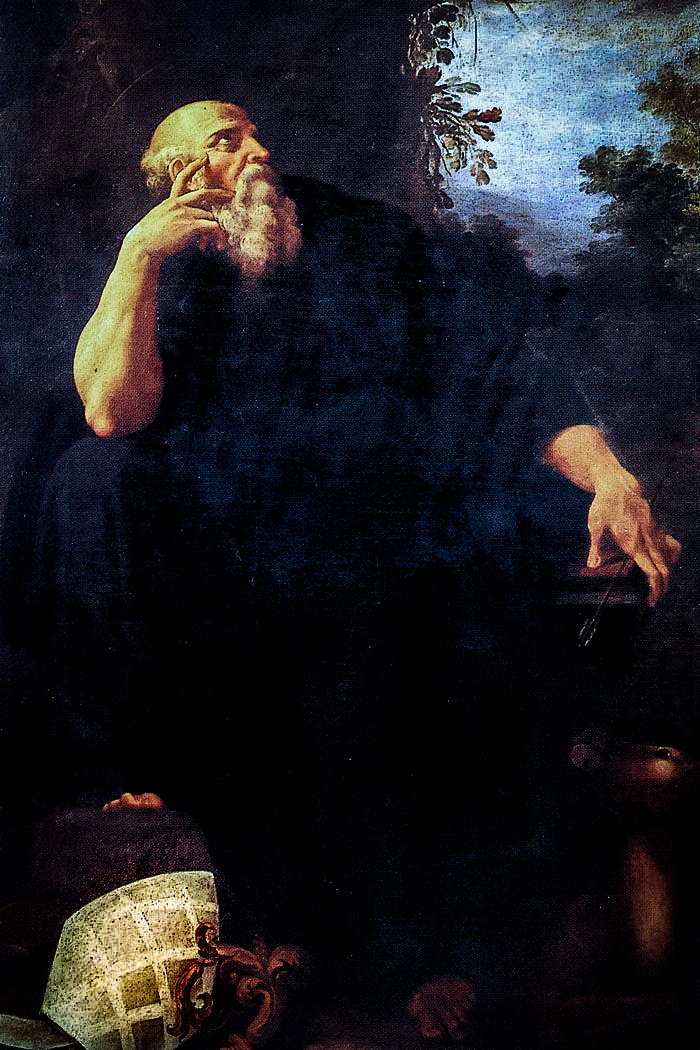at the presentation of the book "Sant'Egidio: la storia, il culto, le fonti"
I am an empirical researcher, so I approach concepts trying to translate them into empirical indicators. When we speak of the miracles of Sant’Egidio, the first empirical indicator related to the context that we should draw is a recurring conflict between faith and reason. Of course, here, today, a context of faith unites us and it prevails over any other rational element. Yet in the miracles there are also many rational aspects. Although, what attracts us and touches us is the witness of faith we receive from them.
In the tales of the miracles of Sant’Egidio the protagonists thank. As we read in all the santorals (stories of saints) across the world, thanksgiving in the presence of miracles is an expression of faith and of gratitude that can be found in different religious and cultural traditions: say like the ‘ex voto’ (votive offerings).
The topic which we will find useful to stop and reflect on is the possible concordance. Thinking about classical mythology, according to Plato the myth (myth is from the Greek word mimesis) is the resemblance of the empirical things to the transcendent idea, which is their universal type. According to Aristotle, it is the representation of the essence of the things, produced for instance by the artist. That is to say that myth shows something which is not easily comprehensible. So, myth acts out, or mimes, something which is not easily measurable, provable, at the rational level. When we speak of miracles we sit in this same realm. We have lots of elements of comparison and we can use the same criteria of analysis in many historical and cultural situations. I mean that faith can profit even by a comparison, strong anchor, a context. However, speaking about concordance, we need to mind the historical data as much as possible: Sant’Egidio’s date of death, 720 A.D., is a well-established ‘tradition’, but we need to look at the general historical context: the situation around the Mediterranean at that time. A date of major significance is 711, when commander Tariq ibn Ziyad landed at Gibraltar and from there went on to conquer Spain. Muhammad died ten years after the Hejira, in 632; a hundred years later, in 732, there was the Battle of Poitiers, won by Charles Martel: the first time the Europeans halted the Arab advance. Therefore, we can assume that there is concordance in chronology of that period of time, which closely concurs with the chronology of Egidio.
Egidio was a very well-known saint: he was part of Holy Fourteen Helpers. Moreover, out of those fourteen, Egidio was among the five first ‘special’ Helpers, along with Biagio or Barbara. There was a church in Bad Staffelstein, in Germany, dedicated to the Holy Helpers: it was a shrine characterized by an extraordinary devotion and a sumptuous architecture. Another miracle is the fact that we are here today with the Community of Sant’Egidio. No joke. Within a perspective of faith nothing happens by chance. The Community of Sant’Egidio performs many deeds of charity and faith. It was not the Community who looked for Sant’Egidio. It was Sant’Egidio who looked for the Community! You may say that is just by chance. But I think we need to open our hearts and minds to some positive doubts. Not all things happen by chance, or only by chance. And we have some more empirical, historical elements that we can add in, if we are willing and able to make a selection.
First example: Pope Clement IV, was born in Saint-Gilles-du-Gard between 1190 and 1200. Do you really think that a Pope, born in Saint-Gilles-du-Gard, did not help to spread the cult of Sant’Egidio? And that is what has indeed happened. Besides, previously, Callisto II, born around 1060, was inspirer and author of the Codex Calixtinus, around 1120, that is the most ancient description of the pilgrimage to Compostela. A page of that Codex is dedicated to Saint-Gilles and his burial place. So, we have well-established witnesses and traditions about the figure of Sant’Egidio. There are historical and physical evidences that founded specific territorial routes. Some have doubted that Callisto II was truly the author or the inspirer of the Codex Calixtinus and that the information about the sumptuous grave of Sant’Egidio was true, but after seven centuries, in 1865 a gravestone was found, that was on Sant’Egidio’s burial place in the Abbey crypt. It is likely that the burial place was concealed and made inaccessible in order to protect it from pillage and the destruction during the Wars of Religion. The crypt is still difficult to get to nowadays.
Another historical data: Sant’Egidio really existed and he was a hermit, disturbed by the presence of Veremedio or Veredemio (there are different transcriptions) because there were too many people around who troubled him. That is why he went alone to a solitary hermitage. That place has been identified in a spot quite close to Saint-Gilles’ Abbey. That is the last pilgrimage that is still made nowadays, in a very secular manner, according to the idea of secularism that comes from the French Revolution. Only on the occasion of the 1300th anniversary of the Saint, a magnificent public religious procession to Saint-Gilles was organized.
Other sources are available and bear witness to the traditional devotion: not only iconographic sources, but also hymns, songs, lauds addressed to Sant’Egidio over the years. An extraordinary example is the santoral which has been well translated and published in the book we are talking about: it is the Laudario (collection of lauds) of the ‘Compagnia fiorentina di San Gilio’ (1278). This was an extraordinary discovery which occurred in Florence thanks to the scholar Adolfo Bartoli in 1879 (another Bartoli: in 1800!). The person who has rediscovered and studied in the depth this codex was Concetto Del Popolo, medievalist philologist from the University of Turin, born in Linguaglossa, Sant’Egidio being the patron saint of this village. Another coincidence… In that Laudario there are all the elements I have just mentioned. Linguaglossa is a quite large village at the foot of the volcano Etna, in Catania province. There Sant’Egidio performed some historical miracles: more than once, since 1566 until 1923 he stopped the streams of lava a few meters before a steep drop which would have allowed the lava to bury the whole village for ever.
There is another direction of research that, in my opinion, should be followed: the Italian route. The cult of Sant’Egidio is spread all over Europe, in the United Kingdom, France, Poland, Germany, Hungary, Austria, but there is a peculiar Italian ‘geography’ that should be studied in depth from historical and cultural point of view: it is mainly connected to the history of the Angevin in Italy. So, Linguaglossa is in the far south of Italy, the last small town under the patronage of Sant’Egidio the Abbot, before you hit Africa. There is another important place, where Sant’Egidio is patron saint, in western Sicily: Mazara del Vallo. There we find a perfect correspondence with the iconography that can be seen in the important wood portal in Orte, in Viterbo province. The most northern memory of the Italian devotion is in Varrés in Aosta Valley and the most southern is in Linguaglossa, in Sicily. The study of the iconography and of the local devotions, both the most ancient and the closest to us, provides many witnesses of faith and at the same time many historical corroborations connected to the devotion to Sant’Egidio. One may say that all this occurred by chance, but in that case, we leave the faith domain and put an end to the discourse about Sant’Egidio and also about most of the other saints we commemorate every day, even though they represent historical sedimentations, witnesses, physical spread of century-old devotions.















